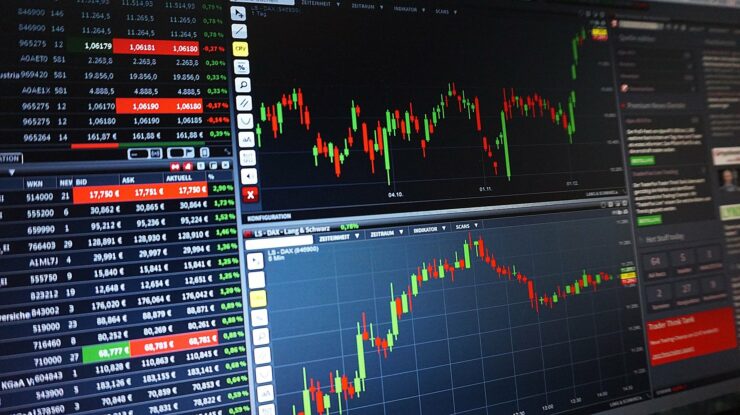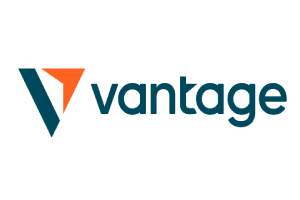Dollar-Cost Averaging, if the value of stocks and the fear of missing out on market gains are keeping you awake at night, then we might just have a great strategy for you – dollar-cost averaging.
Our Forex Signals
1 - month
Subscription
 Up to 15 signals daily
Up to 15 signals daily 76% success rate
76% success rate Entry, take profit & stop loss
Entry, take profit & stop loss Amount to risk per trade
Amount to risk per trade Risk reward ratio
Risk reward ratiomonth
3 - month
Subscription
 Up to 15 signals daily
Up to 15 signals daily 76% success rate
76% success rate Entry, take profit & stop loss
Entry, take profit & stop loss Amount to risk per trade
Amount to risk per trade Risk reward ratio
Risk reward ratiomonth
 Most popular
Most popular
6 - month
Subscription
 Up to 15 signals daily
Up to 15 signals daily 76% success rate
76% success rate Entry, take profit & stop loss
Entry, take profit & stop loss Amount to risk per trade
Amount to risk per trade Risk reward ratio
Risk reward ratiomonth
Lifetime
Subscription
 Up to 15 signals daily
Up to 15 signals daily 76% success rate
76% success rate Entry, take profit & stop loss
Entry, take profit & stop loss Amount to risk per trade
Amount to risk per trade Risk reward ratio
Risk reward ratioSeparate Swing Trading Group
 Up to 3 signals weekly
Up to 3 signals weekly 76% success rate
76% success rate Entry, take profit & stop loss
Entry, take profit & stop loss Amount to risk per trade
Amount to risk per trade Risk reward ratio
Risk reward ratiomonth
1 - month
Subscription
 Up to 15 signals daily
Up to 15 signals daily 76% success rate
76% success rate Entry, take profit & stop loss
Entry, take profit & stop loss Amount to risk per trade
Amount to risk per trade Risk reward ratio
Risk reward ratiotime
As the old saying goes – “slow and steady wins the race”. The general idea with dollar-cost averaging is to slowly build your stock position. The period of time in which you do this is based entirely on your preference and investment budget.
3
Payment methods
Trading platforms
Regulated by
Support
Min.Deposit
Leverage max
Currency Pairs
Classification
Mobile App
Min.Deposit
$100
Spread min.
Variables pips
Leverage max
100
Currency Pairs
40
Trading platforms
Funding Methods





Regulated by
FCA
What you can trade
Forex
Indices
Actions
Cryptocurrencies
Raw Materials
Average spread
EUR/GBP
-
EUR/USD
-
EUR/JPY
0.3
EUR/CHF
0.2
GBP/USD
0.0
GBP/JPY
0.1
GBP/CHF
0.3
USD/JPY
-
USD/CHF
0.2
CHF/JPY
0.3
Additional Fee
Continuous rate
Variables
Conversión
Variables pips
Regulation
Yes
FCA
No
CYSEC
No
ASIC
No
CFTC
No
NFA
No
BAFIN
No
CMA
No
SCB
No
DFSA
No
CBFSAI
No
BVIFSC
No
FSCA
No
FSA
No
FFAJ
No
ADGM
No
FRSA
71% of retail investor accounts lose money when trading CFDs with this provider.
Min.Deposit
$100
Spread min.
- pips
Leverage max
400
Currency Pairs
50
Trading platforms
Funding Methods




Regulated by
CYSECASICCBFSAIBVIFSCFSCAFSAFFAJADGMFRSA
What you can trade
Forex
Indices
Actions
Cryptocurrencies
Raw Materials
Etfs
Average spread
EUR/GBP
1
EUR/USD
0.9
EUR/JPY
1
EUR/CHF
1
GBP/USD
1
GBP/JPY
1
GBP/CHF
1
USD/JPY
-
USD/CHF
1
CHF/JPY
1
Additional Fee
Continuous rate
-
Conversión
- pips
Regulation
No
FCA
Yes
CYSEC
Yes
ASIC
No
CFTC
No
NFA
No
BAFIN
No
CMA
No
SCB
No
DFSA
Yes
CBFSAI
Yes
BVIFSC
Yes
FSCA
Yes
FSA
Yes
FFAJ
Yes
ADGM
Yes
FRSA
71% of retail investor accounts lose money when trading CFDs with this provider.
Min.Deposit
$50
Spread min.
- pips
Leverage max
500
Currency Pairs
40
Trading platforms
Funding Methods




What you can trade
Forex
Indices
Actions
Raw Materials
Average spread
EUR/GBP
-
EUR/USD
-
EUR/JPY
-
EUR/CHF
-
GBP/USD
-
GBP/JPY
-
GBP/CHF
-
USD/JPY
-
USD/CHF
-
CHF/JPY
-
Additional Fee
Continuous rate
-
Conversión
- pips
Regulation
No
FCA
No
CYSEC
No
ASIC
No
CFTC
No
NFA
No
BAFIN
No
CMA
No
SCB
No
DFSA
No
CBFSAI
No
BVIFSC
No
FSCA
No
FSA
No
FFAJ
No
ADGM
No
FRSA
71% of retail investor accounts lose money when trading CFDs with this provider.
Maybe you’ve heard fellow investors talking about dollar-cost averaging and been curious about what it entails? Even if you’ve never heard of it, today could be the day you discover a new trading strategy which suits you to a ‘T’.
After all, dollar-cost averaging is an excellent way for investors to build up their portfolio over a long period of time In this guide, we are going to talk about everything from what dollar-cost averaging is, the pros and cons to consider, and how you can get started with a risk-averse investment strategy today!
Eightcap - Regulated Platform With Tight Spreads

- Minimum deposit of just 250 USD to get lifetime access to all the VIP channels
- Use our Secure and Encrypted Infrastructure
- Spreads from 0.0 pips on Raw Accounts
- Trade on the Award-Winning MT4 & MT5 Platforms
- Multi-jurisdictional Regulation
- No Commission Trading on Standard Accounts

What is Dollar-Cost Averaging?
In a nutshell, if you were to invest a fixed amount of dollars at regular time intervals in order to build up your investment portfolio (instead of investing one lump sum), this is dollar-cost averaging. A good example of this is if you wanted to invest $10,000 in Amazon stock. Rather than you investing $10,000 right away, you might invest $2k each month for 5 months straight.
Additionally, dollar-cost averaging can also be used in a volatile market in order to build a stock position more quickly. In this instance, as opposed to investing $2,000 a month for 5 months, you might choose to invest $2.5k weekly over 4 weeks.

Investors often use this method in order to increase the number of stock positions in their portfolio over several years. Some traders, for example, might invest $4,000 in the same stock annually, and not change that strategy for many years.
The truth is, there are different ways to use dollar-cost averaging. How you choose to implement it will depend on your investment technique and what your long-term portfolio goals are.
Dollar-Cost Averaging: Does it Really Work?
It might seem like a large upfront purchase would be better than dollar-cost averaging. However, many investors believe that dollar-cost averaging helps them to largely remove the emotion from investment decisions and to think in the longer term.
Whether you’re a veteran investor or are new on the scene, you will more than likely be aware of the 3 emotions of trading psychology – fear, hope, and greed. As the market changes, these emotions often come into play and may push you to make emotional decisions.
As far as dollar-cost averaging goes, one could say that you are buying at a time when other people are displaying their own trading emotion – fear. This could set you up nicely for a great price, and some impressive gains in the long term.
How to Make Your Odds More Favourable to you
When it comes to your investment strategy, one of the most attractive things about dollar-cost averaging is the favourable average price. This is thanks to the mathematics of buying at different share prices.
To give you an example of this, let’s say that you are looking to invest $20,000 in a particular stock. Through dollar-cost averaging, you decide to invest $4,000 monthly on the first day of trading, and you do this for 5 months.
Now imagine that on each one of those 5 trading days (the days you invested over 5 months) the same stock was trading at values of:
- $100
- $80
- $40
- $80
- $100
The stock in this scenario was pretty volatile over those 5 months but ended up back where it started. On the days you bought your shares, the average price of the stock would have been $80 (the 5 values divided by 5).
Dollar-Cost Averaging: Don’t try to Time the Market
It might seem like you should have purchased all of your shares when the respective stock is at an attractively low price. Surely, everyone should be doing that, right?
Yes, of course – in an ideal world we would all like to purchase stocks and shares when the underlying asset is at a discounted price. But, hindsight is a marvellous thing. We all wish we picked last week’s lottery numbers, too!
Unfortunately predicting odds isn’t always easy, or possible. The same can be said for attempting to correctly time the price of a stock. It’s very difficult to be sure of when a stock might be at a low point, or whether it has further to fall.
Lady luck might be on your side, but most of the time it really is almost impossible. Crucially, your energy will be better spent doing something else – such as technical or fundamental research.

Vice versa – people panic and begin to sell their stocks due to a plummeting market. The natural reaction is to jump ship immediately. This makes sense, but when it comes to investing you could be making a huge mistake.
Dollar-Cost Averaging: Long Term Strategy
Generally speaking, dollar-cost averaging is always a long-term strategy. Currents within the economy tend to push most stocks in the same direction. Eventually in time, after all, markets are continuously fluctuating.
A bull market can last anywhere between months and years. The value of the dollar-cost averaging in this situation would be poor as a short-term investment strategy. Individual stocks and mutual funds don’t tend to experience any dramatic shifts in value on a monthly basis (of course there are exceptions to the rule).
In order to really see the true value of dollar-cost averaging, you have to ride the waves of your investment. Through the good, the bad and the ugly. You will find that over time the assets in your portfolio are going to not only reflect the high prices of the bullish market, but also the bargains of the bearish.
Dollar-Cost Averaging: How to Build a Stock Position
To start building a stock position using a dollar-cost averaging strategy, there are a handful of steps you are going to need to take first.
- Have a look at your finances and think about how much you are willing to invest in a certain fund or stock.
- How often would you like to invest in said stock or fund? You can invest on a daily basis, every week, monthly, every quarter or even annually.
- When it comes to spreading out your investment payments, how many periods would you like to split them over? For example, say you want to invest a total of $20,000. You might decide to split your investment over 10 months, paying $2,000 on the first trading day of each month. In other cases, investors prefer to invest weekly. It really is your choice.
Essentially, the easiest way to work out your plan of action is to take the total amount you want to invest (i.e – in our example above that amount would be $20k) and divide that number by the length of time you want to invest.
Using the example above that would be:
- $20,000 (total amount to invest)
- divided by 10 (number of months)
- amounts to $2,000 (amount to invest per month)
Of course, rarely are things cut and dry. So with each of the steps we’ve mentioned above, there are various outcomes and each has positive and negative points.
The Outcome is Unknown
On the one hand, there isn’t anything superior about investing weekly, monthly instead of quarterly. Instead, you should weigh up commission fees when considering how often you want to invest in your stock. If you are planning on investing little and often, then you might just find that the commission fees then become a bit on the expensive side.
- For instance, let’s say you decide to invest $6,000 in a particular stock and choose to invest $600 every month for 10 months.
- On each trade, let’s say you pay a $14 commission.
- This is 2.3% of your total investment.
Whereas if you instead split the $6,000 into 4 quarterly investments then it’s clear to see that you would pay a lower percentage rate. In this instance, you are looking at only 1% of that invested capital being taken for trades commission.
Likewise, there are positives and negatives to investing over more periods rather than a shorter amount of time. If for a brief period the stock becomes increasingly costly, a small number of your shares have been bought at the same high price. On the other hand, as we covered above, this can also mean making your commission costs higher.
As you can see there are many ways for you to tailor the dollar-cost averaging strategy to your needs. You might decide you want to average into positions by purchasing your shares once a year. Or, it might be more suitable for you to buy those shares every week for just a month or two.
The bottom line is that it depends on your personal situation. We can’t stress enough that whatever you do, it’s important to have an investment plan in place and fully commit to that plan. The moment you skip an interval is the moment your plan is foiled!
Dollar-Cost Averaging: Is it Better to Invest a Lump-Sum?
There have been studies into whether or not it is more beneficial to invest one lump sum rather than dollar-cost averaging into your positions. It has to be said, there has been some interesting research done on this subject and the lump sum approach came out smelling of roses.

The study compared both spreading X amount of investment money over monthly instalments, and investing X amount of money in one lump sum.
- Over the course of 12 months (periods), investing one lump sum of money outshone a dollar-cost averaging strategy by an average of 68%. The average when it came to margin was 2.39%.
- The study found that in most cases, the lump-sum approach was better for the investor, especially over long periods of time.
- In intervals of 6 months, the lump-sum approach was superior 64% of the time.
- When the provider studied the results of a 36 month time-frame, the lump-sum strategy beat dollar-cost averaging a whopping 92% of the time.
One of the reasons this is thought to be the case is that stocks tend to experience an upward bias. Now, whilst you are drinking in the results of this eye-opening study, it is important to remember that there are lots of investors who simply don’t have that lump-sum lying around.
Let’s put it this way: If you fancy building a $20,000 position in a stock, it probably wouldn’t be practical to do it straight away. The long and short of it is that yes – theoretically, putting all of your investment eggs in the basket at once has been proven to be more profitable than using a dollar-cost averaging strategy.
But, this argument is completely irrelevant to you if you simply don’t have the money to buy a full position in one go.
Pros and Cons of Dollar-Cost Averaging
Whilst dollar-cost averaging is great for many investors, it is worth noting that much the same as any other investment or trading strategies – it won’t work in every financial circumstance.
Taking that into consideration, we’ve put together a rundown of the pros and cons of dollar-cost averaging.
Pros
- It doesn’t matter whether the stock price rises or falls between your investments. You know with a dollar-cost averaging strategy that your emotions are not going to come into it. The value of your investment and the time and date you will invest has already been predetermined.
- Dollar-cost averaging stops ill-fated market timing. Let’s just say that you purchased bank stocks in the mid-noughties before the financial market collapsed. It could have been the case that if you had been dollar-cost averaging those positions, you would have been allowed to buy the shares at the lower pre-collapse price. By using an ‘averaging’ strategy a few years before the market crash, as an investor you would have been up.
- As we touched on earlier, dollar-cost averaging can be a smart way to invest when the market is uncertain or volatile. By averaging, you don’t need to worry so much about whether you’re timing it right for the best price.
- For those people who want to invest but don’t have a large amount of money to put in at once, dollar-cost averaging is great. For instance, let’s say that in an ideal world you would like to invest $15,000 in a particular stock. A lot of people just don’t have $15,000 going spare. This is when dollar-cost averaging comes into play. If used correctly, it can be a superb way to build a position without a huge initial outlay.
As with light and dark, where there are pros, there will always be cons. As such, we’re going to explain the possible negative aspects of the dollar-cost averaging investment strategy.
Cons
- If you plan on using dollar-cost averaging, as well as investing in dividend stocks – one could argue that this is going to deplete your all-important income. For example, you might be interested in investing $20,000 in a stock which yields 4% annually ($800). This amounts to a quarterly dividend of $200.
- In this case, your dividend gains in the first quarter will be 10% of the investment amount you wanted. Put simply, if you had invested on a dollar-cost average basis, the nominal amount of dividends that you received would have been much lower.
- When it comes to the wider stock markets, prices do tend to increase over the course of time. This can mean that you might not do as well with dollar-cost averaging over a longer period of time.
- In the early stages of dollar-cost averaging, some investors experience a phenomenon known in the industry as ‘cash drag’. To put it simply, this refers to the large amount of cash sitting on the bench not earning you much in the way of returns.
- An example of a so-called cash drag is this. Let’s say you’re splitting a $6,000 investment over 6 monthly instalments and the portfolio is made up of 40% bonds and 60% stocks. After 3 months, the reality of your portfolio allocation is 50% cash, 20% bonds and 30% stocks. The cash element is going to weigh on your returns.
Overall, the negatives of dollar-cost averaging are quite modest. Of course, buying more often does equal more trading fees. But these days, brokers like eToro allows you to buy shares on a commission-free basis. This makes it more accessible for investors with a tighter budget.
Crucially, you will have the capacity to dip in and out of the market and the risks that come with it – as you are buying in the long-term.
Dollar-Cost Averaging: Using Mutual Funds
It has been said that no-load mutual funds are one of the best investment vehicles there is when it comes to the dollar-cost averaging. Mutual funds are often bought and sold with zero-commission fees on individual trades, so it’s perfect for averaging.

- For example, let’s assume you paid an instalment payment to your mutual fund amounting to $300.
- The mutual fund, in this case, charges a 20 basis point expense ratio.
- You’re paying a fee of $0.60 which is 0.2%.
- In the case of a lump-sum investment of $3,000 in the same fund, you pay $6 (0.2%).
- As you can see, it doesn’t matter how much you invest – the percentage rate remains constant.
Now, let’s say you make an investment of $50 via a broker charging $20 commission on each trade. This equates to a 40% fee. A $500 investment would involve a fee of $20, or 4%.
When it comes to an online discount broker, they do tend to cost less. This can sit around the $5-mark for each transaction or trade. But – and as noted earlier, eToro offers shares at a $0 commission-rate. By definition, no-load mutual funds don’t charge any transaction fees. Moreover, there’s easy access to investors of all levels of experience, as well as low investment requirements.
Another thing to consider is ETFs (exchange-traded funds) or index funds if you cut down your costs even more. It is important to note that they aren’t managed actively, though. This means that there are no management fees to worry about. However, they are made to mirror the performance of a specific index.
How to Know if Dollar-Cost Averaging is for you
Essentially there are 4 ways for you to purchase a stock.
- Invest identical values of money at predetermined intervals (i.e monthly)
- If you’ve got a big budget, you can invest a large lump sum in one payment.
- Buy the same amount of shares at predetermined intervals. This is handy for some ‘options’ strategies as they are usually contracts for a hundred shares.
- If you consider yourself a knowledgeable investor, you can just invest in stocks whenever you see fit. If you are just starting out it, is strongly recommended that you keep your investment emotions in check and more importantly, make a plan and stick to it.
Depending on your personal circumstances, all four methods can work well. It is worth remembering that in an uncertain or volatile market, dollar-cost averaging can be a wise investment strategy. This is especially the case if you don’t have a huge investment budget to begin with, and are concerned about pricey stocks.
Dollar-Cost Averaging: What are the Rewards?
Used as part of a long-term strategy, dollar-cost averaging is a smart way to invest. The more shares you buy, the bigger your portfolio gets. And, the more shares you buy when the cost is low, the higher the reduction in the average share price is over time.
Another big bonus when it comes to dollar-cost averaging is, of course, the fact the price and time of your investments are prearranged. So, you don’t need to worry about whether the market is fluctuating or not. You will automatically buy the stock anyway and at the predetermined price.
On top of that, as we’ve covered on this page, dollar-cost averaging is a great way for new investors to slowly build on a portfolio and gradually build their wealth. The fact that you don’t need to start with a huge lump-sum is an attractive feature for most new investors.
How can I Start Dollar-Cost Averaging?
With a bit of research, getting started with dollar-cost averaging can be fairly easy. The vast majority of brokerages make setting up a trading plan really easy. Most brokerages will work alongside you to set up your automatic trading plan, including automatically buying on your behalf at regular intervals.
If the online broker you have chosen, or are already with, doesn’t offer an automatic trading plan – are still able to do it. But, you just need to set up a purchase on a fixed schedule. For example, every Monday, or the first trading day of every month.

A top tip when it comes to investing via an automatic trading plan is to instruct for your broker to automatically reinvest any dividends you receive from funds and stocks. This is a tried and tested way for you to gradually build up your gains, also enabling you to continue buying more assets along the way.
Best Broker for a Dollar-Cost Average Strategy in 2023
If you want to start a dollar-cost average strategy today, you need a broker that meets two key metrics:
- Fees and commissions are low
- You have ample choice when it comes to tradable shares
In this respect, we at Learn 2 Trade would argue that eToro is the best online broker for this purpose. Here’s why:
To Conclude
If you are in a financial position to do so, we do advise investing a lump sum for the best gains. However, it’s not realistic to assume everyone has the means to do this. If you can’t afford a lump sum, don’t be disheartened – dollar-cost averaging is a great way for you to make sensible investments in a stock you are interested in.
This will be over a period of time which suits your investment style – as well as your financial budget. Most investors using dollar-cost averaging tend to choose intervals of once every 2 weeks, or every month. This is probably less down to it being a more secure strategy and more the timing of wages or paychecks.
One of the most attractive things about dollar-cost averaging is the reduction of the impact of stock price volatility. Not to mention, giving people with less cash the chance to invest in instalments. And the bottom line? It’s a superb way to build up your investment portfolio, irrespective of which direction the market is going in.
Just make sure you have a systematic investment plan in place, and that you stick to that plan in the long run. And remember, arrange a predetermined price which is realistic for you. After all, the last thing you want is to stumble and be faced with no choice but to cancel a payment and break the cycle (and your investment plan).
AvaTrade - Established Broker With Commission-Free Trades

- Minimum deposit of just 250 USD to get lifetime access to all the VIP channels
- Awarded Best Global MT4 Forex Broker
- Pay 0% on all CFD instruments
- Thousands of CFD assets to trade
- Leverage facilities available
- Instantly deposit funds with a debit/credit card


